Essentials for Knife Making Craftsmen
Abana Chapter
February 05, 2024
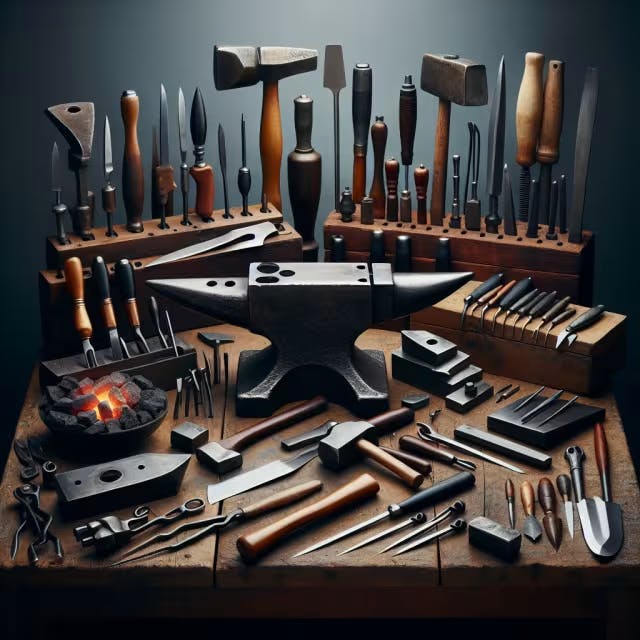
Delving into the intricacies of knife making requires not only finesse and precision but also the right knowledge and tools. For craftsmen looking to master this age-old craft, understanding the essentials for knife making is crucial. With a focus on selecting the perfect steel, gathering indispensable tools, and honing the art of handle design and sharpening techniques, this article aims to equip both novice and experienced blade smiths with the foundational elements necessary to create both functional and exquisite knives.
Key Takeaways
Mastering knife making requires an understanding of both the fundamentals and the intricate details involved in the craft.
The selection of steel is a critical choice in knife making, affecting the durability, sharpness, and overall performance of the knife.
Having the right tools is essential for knife crafting, and they can range from basic hand tools to specialized equipment.
Handle design is not just about aesthetics; the choice of materials and the application of techniques also impact the functionality and comfort of the knife.
Knowledge of various finishing and sharpening methods is essential for knife makers to ensure their knives are both effective and visually appealing.
Continuous practice and skill development in both the creation and finishing of knives are vital for both novices and seasoned blade smiths.
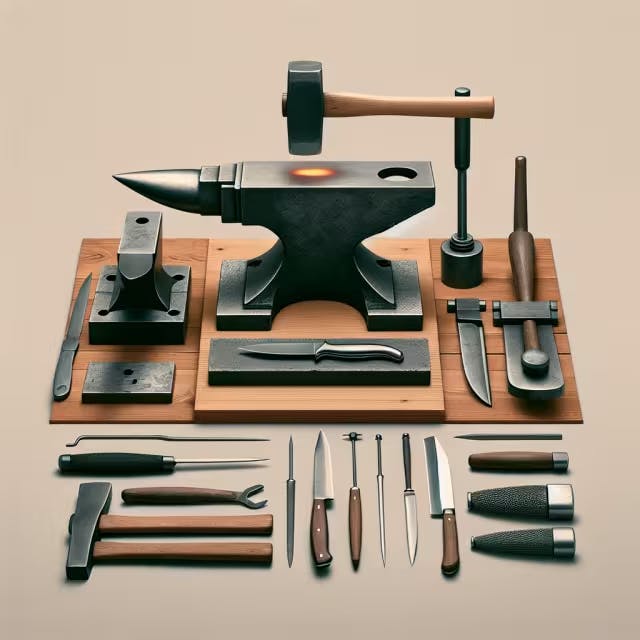
Understanding the Basics of Knife Making
Knife making is a skill that combines artistry with functionality. For those starting out or looking to refine their craft, having the right tools and materials is crucial. A key component is the forge, which heats the metal to a pliable state, allowing for shaping and forming. Quality steel is also essential, as it determines the durability and sharpness of the finished knife.
Materials and Equipment | Description |
Forge | The heating element for metal shaping. |
Anvil | Heavy, stable work surface for hammering. |
Hammers | Various sizes for shaping the metal. |
Tongs | To hold and manipulate hot metal safely. |
Steel | The core material for the blade. |
Grinders/Sanders | For refining the shape and edge of the knife. |
Quenching Oil | To cool and harden the steel. |
Handle Material | Wood, bone, or synthetic materials for grip. |
Attention to detail is necessary during the process, whether balancing the blade for performance or meticulously grinding the edge for sharpness. Every step, from designing the shape to attaching the handle, plays a role in creating a bespoke and high-quality tool. With practice, precision, and patience, any craftsman can master the art of knife making. For more on selecting the ideal materials for your project, take a look at Knife Making Essentials for Craftsmen.
Remember that safety is paramount when working with high temperatures and sharp materials, so proper protective gear such as goggles and gloves are indispensable. Build your skills by starting with simple projects, and as proficiency grows, advance to more complex designs and techniques.
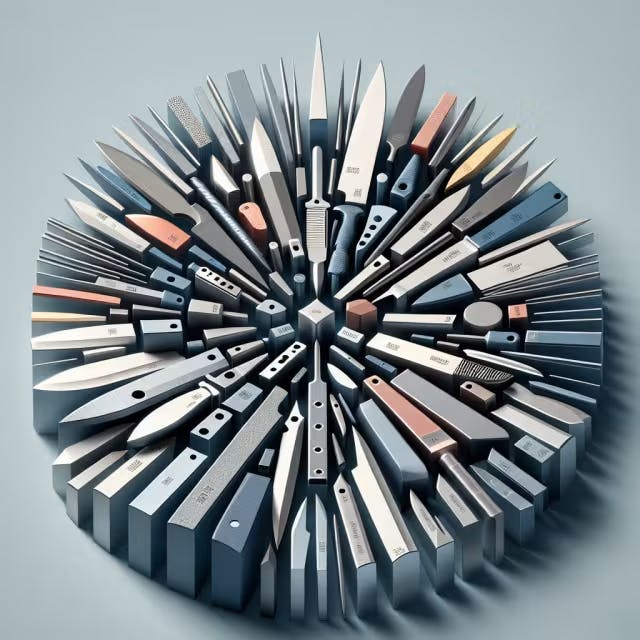
Selecting the Right Steel for Your Blade
Crafting a knife that meets specific needs requires not only skill but also the right materials, and the foundation of any good knife is quality steel. The steel type chosen profoundly impacts the blade's durability, strength, edge retention, and resistance to corrosion. The most popular steels are categorized into high carbon, stainless, tool, and alloy steel groups.
Popular Steel Types for Knife Making:
Steel Type | Characteristics | Example Usage |
High Carbon Steel | Great edge retention, very sharp | Bushcraft knives |
Stainless Steel | Resistant to rust, less maintenance | Kitchen knives |
Tool Steel | Hard and durable, can be brittle | Woodworking knives |
Alloy Steel | Diverse properties, specific uses | Specialty or custom knives |
For outdoor knives, many craftsmen prefer high carbon steel for its exceptional edge and ease of sharpening in the field. Alternatively, stainless steel is favored in culinary settings for its ability to withstand moisture without rusting, vital for food safety and hygiene. Tool steels are valued in tasks that demand a sturdy blade, such as woodworking, while alloy steels can be customized with various elements to achieve a balance of hardness, toughness, and wear resistance for unique applications.
Selecting steel isn't solely about the type; craftsmen should also consider grades and specific compositions, as these can vary even within a steel category. For instance, the well-known 1095 is a high carbon steel type heralded for knife making, but various grades can offer subtle differences in performance. Understanding the nuances of each steel's heat treatment is equally crucial, as it has a significant influence on the blade's final characteristics.
To guide beginners and seasoned veterans alike, several informative resources provide detailed comparisons and real-world tests of different steel. One such resource is the Knife Steel Chart, which offers clear comparisons of the different types of steel used in knife making.
By delving into the particulars of blade steel, you can ensure your handcrafted knives stand the test of time and use. Ensure to research and experiment with different steels to uncover the ideal match for your knife-making endeavors, and consider consulting detailed comparisons and real-world tests to inform your choices.
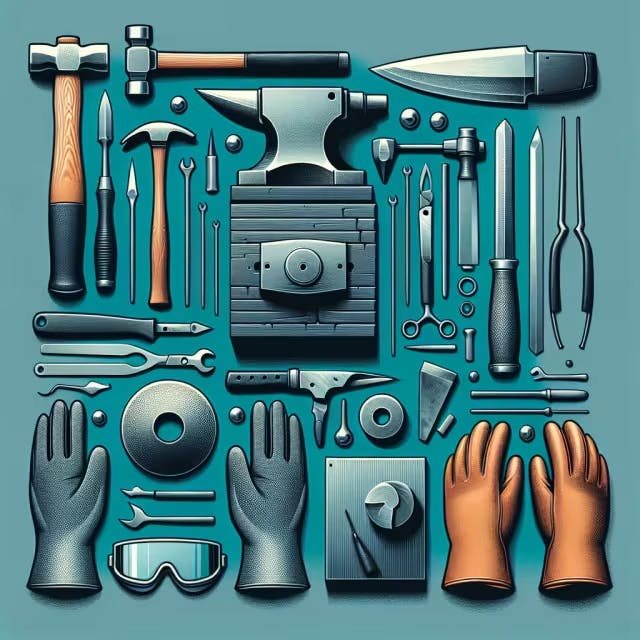
Essential Tools for Knife Crafting
Crafting a high-quality knife requires precision and skill, as well as an arsenal of appropriate tools. These tools not only facilitate the process but also ensure that the final product stands up to the standards professional knife craftsmen are renowned for.
Forging Equipment: A sturdy anvil and a reliable forge are vital components. Forging shapes the steel and helps establish the knife's basic form.
Grinder: A belt grinder is indispensable for shaping and sharpening the blade. Knife makers rely on its versatility to achieve the desired edge and finish.
Drill Press: Precision is crucial when it comes to creating the holes for the handle. A drill press ensures that holes are accurately placed and of even diameter.
Files and Rasps: Fine-tuning requires manual work. A diverse set of files and rasps enables knife makers to refine the knife's shape and work on intricate details.
Heat-Treating Furnace: Properly hardening the blade ensures that it will maintain its edge. A heat-treating furnace is used to control the heating and cooling cycles that affect the steel’s hardness.
Quenching Tank: After heating, blades need to be quenched in a liquid like oil or water to rapidly cool down, which is a crucial step in the hardening process.
Safety Gear: Safety cannot be overemphasized. Heat-resistant gloves, eye protection, and breathing masks protect artisans from the inherent dangers of the craft.
Knife making requires dedication and patience, and quality tools contribute to the production of superior knives. For those interested, a comprehensive guide on knife making tools includes insights and suggestions for outfitting a workshop. Discover essential tips and resources on equipping your knife crafting workspace.
Knife making is an enriching craft, combining artistry and utility, and with the right tools, craftsmen can turn raw materials into functional works of art.
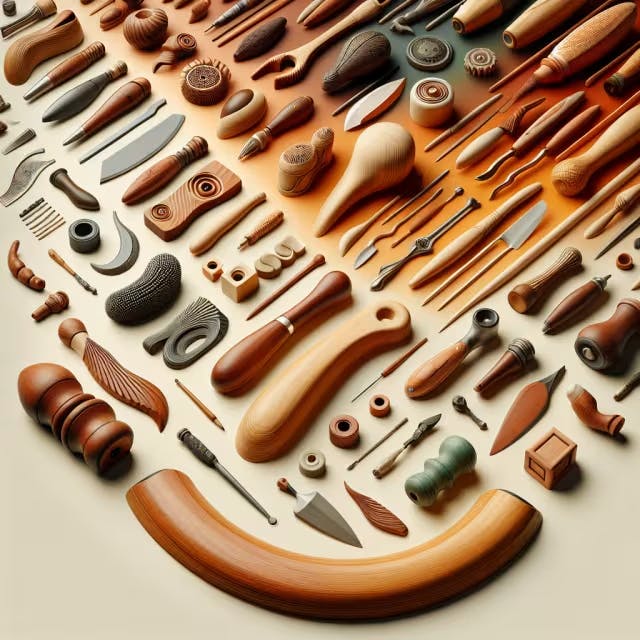
The Art of Handle Design: Material Choices and Techniques
Selecting the right materials and mastering handling techniques are crucial for any knife maker. Wood, synthetic materials, and stabilized materials all offer different aesthetics and functional properties. Hardwoods like walnut, maple, and exotic woods are popular for their unique grain patterns and durability. Synthetic options such as G10, Micarta, and acrylic provide consistency in color and texture, ensuring uniformity in mass production. Stabilized woods, which have been impregnated with a resign to enhance strength, offer the best of both worlds.
When shaping a knife handle, attention to ergonomics ensures a comfortable grip. Every curve must align with the user's hand, allowing for secure use without strain. Sanding down edges and using a contour gauge can achieve this ergonomic fit.
Vital to the durability of the handle is the finishing technique. Oiling wooden handles enhance their grain and provide a protective layer against moisture. For synthetic handles, buffing to a high polish will prevent wear and maintain appearance over time.
Craftsmen can also personalize their knife handles with intricate designs or inlays for additional flair. Exceptional skill in handle design can significantly increase a knife's value, as collectors and enthusiasts often seek unique pieces. Detailed tutorials and guides can assist in expanding these skill sets—resources like Knife Informer provide in-depth insights into various materials and crafting techniques. Visit Knife Informer to learn more about handle materials and techniques.
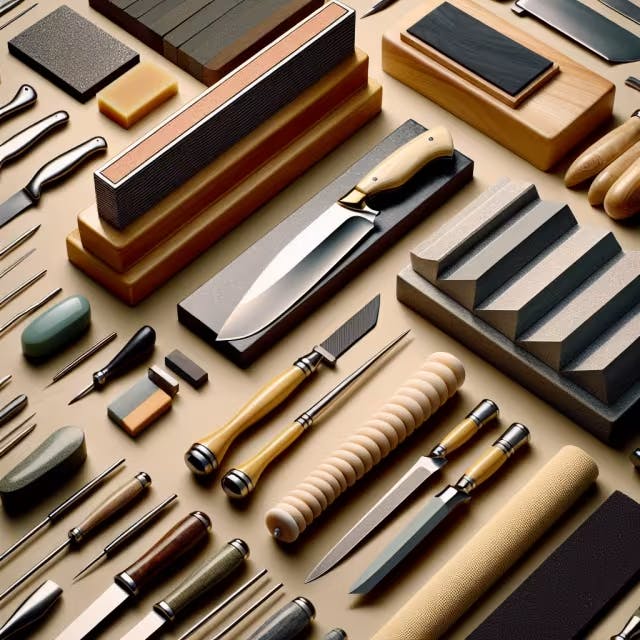
Sharpening Your Skills: Finishing and Sharpening Methods for Knife Makers
Mastering the art of knife finishing and sharpening is vital for any craftsman in the trade. Precision sharpening requires specific techniques and tools ranging from basic whetstones to sophisticated sharpening systems. Getting a razor-sharp edge involves starting with coarser grits and graduating to finer grits for a polished finish. A strop with honing compounds can also be used to obtain an ultra-sharp edge.
For those new to the craft, here is a concise guide to the materials and methods commonly employed:
Stage | Tool | Purpose |
Rough Grind | Bench Grinder | Shaping and removing excess material |
Basic Edge | Sharpening Stones (Coarse Grit) | Establishing the initial edge |
Refining | Sharpening Stones (Fine Grit) | Refining and smoothing the blade edge |
Polishing | Strops/Honing Compounds | Achieving a mirror finish and razor-sharp edge |
Each step is critical, and the time spent carefully honing and finishing a blade ensures durability, performance, and satisfaction for users. As trends and technologies evolve, so do the methods – staying updated on the latest advancements can give knife making craftsmen an edge over the competition. To delve deeper into the specifics of sharpening and honing techniques, Knife Informer offers a comprehensive guide that is highly regarded in the knife making community.
Lastly, always remember safety first. Eye protection and gloves are mandatory when handling sharp tools and machinery. After all, a true artisan respects not only the craft but also the tools and safety involved in creating a masterpiece. In summary, the essentials for knife making craftsmen revolve around a harmonious fusion of selecting premium materials and employing precise tools and techniques. By understanding the basics of knife making, carefully choosing the right steel, integrating artful handle designs, and honing their skills through meticulous finishing and sharpening practices, craftsmen will not only craft knives that are aesthetically pleasing but also highly functional and durable. Remember, the journey of becoming an adept knife maker is one of continuous learning and passion for the craft.
Frequently Asked Questions
What are the essential tools needed for starting knife making craftsmanship
When starting knife making craftsmanship, essential tools and materials include:
Forge: Heats the metal to a pliable state for shaping.
Anvil: A heavy work surface for hammering the metal.
Hammers: Used in various sizes to shape the metal.
Tongs: For holding and manipulating hot metal safely.
Steel: The core material for the blade, with quality steel being crucial for durability and sharpness.
Grinders/Sanders: To refine the blade shape and edge.
Quenching Oil: For cooling and hardening the steel.
Handle Material: Such as wood, bone, or synthetics for the knife's grip.
In addition to these tools and materials, proper protective gear like goggles and gloves is indispensable due to the high temperatures and sharp materials. Quality steel is vital as it influences the blade's durability, strength, edge retention, and corrosion resistance. High carbon steel, stainless steel, tool steel, and alloy steel are popular choices, each suitable for different knife types. Always prioritize safety and start with simple projects, gradually progressing to complex designs as skill advances.
How does steel quality impact the durability and sharpness of a knife
Steel quality is paramount to the performance of a knife, influencing its durability, sharpness, and overall functionality. The type of steel determines the blade's hardness, edge retention, and resistance to corrosion:
High Carbon Steel provides excellent edge retention and sharpness, making it suitable for rugged outdoor knives.
Stainless Steel resists rusting which is ideal for kitchen knives as it requires less maintenance and is essential for food safety.
Tool Steel is hard and holds an edge well, but can be brittle under stress; this type is great for crafting woodworking knives.
Alloy Steel offers customized properties based on its elemental makeup, allowing for a balance of toughness and wear resistance in specialty knives.
The heat treatment process is also critical as it profoundly affects a blade's hardness and durability. Understanding these details helps in crafting a knife that not only looks good but also excels in its intended use.
What key factors should be considered when selecting steel for knife making
When selecting steel for knife making, consider the following key factors to ensure functionality and quality:
Type of Steel: Choose from high carbon, stainless, tool, or alloy steel based on the intended use, desired properties, and maintenance requirements.
High Carbon Steel is preferred for outdoor knives due to its excellent edge retention and ease of sharpening.
Stainless Steel is suitable for kitchen knives as it resists corrosion and requires less upkeep around moisture.
Tool Steel is robust, making it ideal for woodworking knives, but it may be brittle.
Alloy Steel has varied properties tailored for specialty knives with a balance of hardness, toughness, and wear resistance.
Steel Grade and Composition: Investigate the grade and specific composition of the steel, such as the popular 1095 high carbon steel, to understand subtle performance differences. Remember that heat treatment impacts the final characteristics of the blade, affecting its hardness and durability.
Research and Testing: Reference resources like the Knife Steel Chart for comparisons of steel types, and consult detailed analyses and real-world tests to make an informed decision about the right steel for your knife crafting projects.
Why is a belt grinder an indispensable tool for knife makers
A belt grinder is an indispensable tool for knife makers due to several reasons:
Versatility: Belt grinders are multifunctional tools that can be used for shaping, sharpening, and finishing knives. They offer a range of belt grits that can remove material quickly or polish a blade to a fine finish.
Precision: Knife making demands precise edge shaping and the belt grinder allows for consistent grinding angles and fine control over the removal of steel from the blade.
Efficiency: With a belt grinder, knife makers can quickly and accurately shape the steel blank, refine the edges, and polish the blade, which streamlines the entire knife making process.
These capabilities make the belt grinder a core piece of equipment in the creation of both functional and ornamental knives.
What role do handle materials play in the functionality and aesthetics of a knife
Handle materials significantly impact both the practical use and the visual appeal of a knife. They contribute to the overall functionality by affecting the grip and comfort during use, which is particularly important for knives that are used frequently or for extended periods. Additionally, handle materials, ranging from wood and bone to modern synthetics, can greatly enhance the knife's aesthetics, offering a range of patterns, textures, and colors that cater to personal style or brand identity.
How can knife makers achieve a razor-sharp edge through sharpening techniques
Knife makers can achieve a razor-sharp edge through sharpening techniques by following a carefully executed process:
Start with a rough grind using a bench grinder to shape the blade and remove excess material.
Move to basic edge shaping with coarse grit sharpening stones to establish the initial edge.
Continue to edge refinement with fine grit sharpening stones to smooth the blade edge further.
Finally, polish the edge using strops and honing compounds to achieve a mirror finish and sharpness akin to a razor.
It's essential to work from coarser to finer grits and to maintain consistent angles along with the edge. A strop, occasionally treated with honing compounds, can help remove any remaining burr and bring the edge to an extreme sharpness. Always employ safety gear such as eye protection and gloves throughout the sharpening process. For a more detailed guide on these techniques, resources like Knife Informer offer extensive information.


